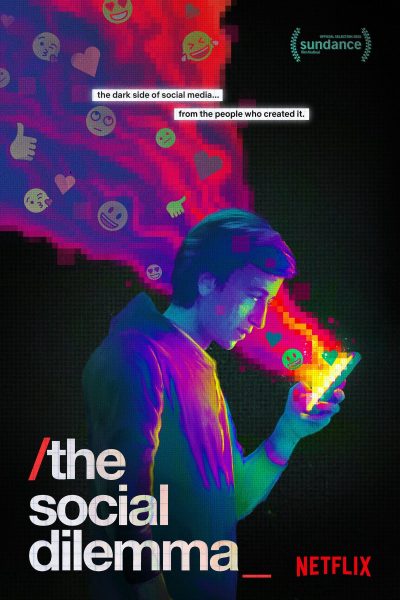Do you ever feel like you spend too much time on social media? Well, that is not a coincidence. The technicians of companies such as Instagram, TikTok, Youtube, Pinterest, or Facebook carefully design big to small details of media pages to hold you on the platforms. This fact may seem too obvious, but the design may be more than just providing customers comfort while wavering around the social media page. The companies get people used to the features they have, make those functions or buttons slip into your life one by one, and make people addicted to social media.
When using social media, data is gathered to build models and predict actions, so that tech companies can increase engagement, growth, and advertising. For instance, it can be how many times you refresh the page, how long you scroll on your feed, your screen time, what kinds of videos you watch, and in what category you spend your time the most.
So what do the companies actually do with this data? In the Netflix documentary “The Social Dilemma”, a lot of former workers from famous social media companies like Instagram, Pinterest, Google, Facebook, and Twitter interview and talk about how unethical and cruel the social media industry is. Tristan Harris, Google’s former Design Ethicist, says, “If you’re not paying for the product, then you are the product”. Many users of social media think they are the customers that companies work for. However, the uncomfortable truth is that the real customers are advertisers who do business with the companies, and the users are being sold. For example, Snapchat, the most used social media platform at the moment, implements a lot of traps to keep you on their app. One of those functions is a streak system represented by a fire emoji and a number of how long the streak is. This causes people to visit the platform every day to keep the streak with their friends, making them loyal to the platform. Then, those daily visits lead the users to surf around the platform, get exposed to many advertisements, and unintentionally be manipulated by the company.
As briefly mentioned above, the business model of companies like Facebook, Twitter, Snapchat, Instagram, and YouTube is advertisers. They pay social media companies to put ads on their pages and try to make people stay on their screen as long as possible. However, the advertisers do not pay the companies only for hanging up their advertisements, they buy data of the users: Advertisers sell certainty (which means that if advertisers pay, they are guaranteed to influence the users they reach). To have that certainty, they need good predictions of human behavior. So, to predict those behaviors, they need data which is mainly the behavior of the users on the internet. The companies sell users to make advertisers as profitable as possible, which eventually leads to a profit for them.
Not only the advertisers but also the industry itself uses data to trap users in the platform. Have you ever experienced a never-ending scrolling page or recommendations of posts and videos based on your interests? To make users stay on the platform, the companies track and analyze their behaviors so that they can provide the content they prefer. However, these kinds of user-specialized content can polarize opinions and prevent users from having diverse thinking. “We’ve created a system that biases towards false information,” said Tristan Harris. Since social media companies keep ignoring the unethical side of the industry, it is very important for us, the main users, to be aware of the fact: Businesses do not do good to people, they pursue profit.

Continuing the interview, the documentary reveals how the industry manipulates the functions of social media to make users addicted to it, which directly connects to the profit of the companies. “There are only two industries that call their customers ‘users’: illegal drugs and software,” said Edward Tufte, a statistician, and professor emeritus of political science, statistics, and computer science at Yale University. Just by reading this quote, one can realize how the industry is wrapping up the awkward truth under the name of connecting the world and making trends. Also, Tristan Harris, mentioned earlier, has spoken extensively about the manipulation tactics employed by social media platforms: “Never before in history have 50 designers, 20- to 35-year-old white guys in California, made decisions that would have an impact on 2 billion people”, “We’ve moved away from a tools-based technology environment to an addiction and manipulation-based technology environment”.
“Social media is not a tool – they are trying to keep you on the screen as long as possible,” said Tristan Harris. An example of addiction can be easily found in our daily lives, and the functions that make you addicted to social media are all strategically created. In the documentary, AI sends an alarm to Ben that his friend has newly joined the platform when he is on break on social media. The alarm makes him hold up the phone and come back to social media. Then, while he is scrolling down, advertisements on the pages are exposed to him (the advertisers and the social media company earn money). On the post, someone tags Ben (just the alarm, not including the image he is tagged so that he has to actually go into the social media to check it). Ben clicks the post, sees the pictures, and goes to the comment section to write one. Then, he finds a cute girl he wants to direct message (DM). He texts with her (showing activated dots while someone is typing). In these everyday activities people do on social media, all the functions are planned out thoroughly so that the users feel comfortable when they surf the platform. Although there is a new function, the company tries to make it as natural as possible so that the users can easily get used to the new function.
An anonymous student attending CHS who also watched this documentary reflects on her own experience of using social media. She said, “It makes me think of how I purchase trending products on social media. Not only the direct ads on the platform but also the influencers who keep on exposing those products make me want to buy those products.” She continues saying, “Another creepy thing is how all my information is in a system. Although I am just a random person on the app, it’s weird how they have access to what I see and predict my behavior, even the clicks that I make and my time per video.”
If you think you are aware enough of how social media will affect your life, you should watch this Netflix documentary. There are more behind the scenes.







